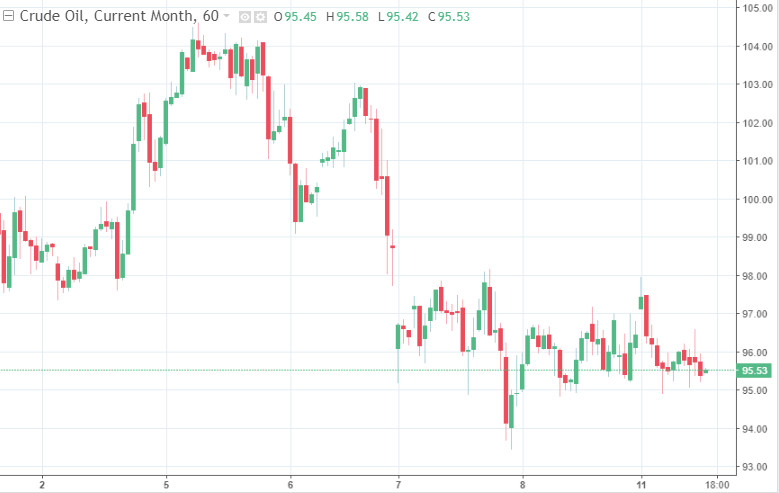On Monday, oil prices are steadily falling. Brent Crude is still trading at $100 per barrel. Traders are mulling over the possibility of a drop in demand for oil, especially in China.

At the time of writing this article, Brent Crude futures for June have lost 2.22%, trading at $100.5 per barrel. On Friday, they rose by 2.2% to $102.78 per barrel.
WTI futures for May decreased by 2.31% to $95.99 per barrel. At the close of the previous trading, they increased by 2.3% to $98.26 per barrel.
The main driver for the growth of oil futures on Friday was the report of tech company Baker Hughes. US oil rigs climbed by 13 to 546 this week. However, despite a sharp rise on Friday, the oil market closed the week in the red. Brent Crude declined by 1.5%, while WTI fell by 1%.

On Monday, market participants are digesting new quarantine restrictions in China, the largest importer of raw materials. The country introduced new lockdown measures to curb the rapid spread of coronavirus. In recent weeks, the epidemiological situation in Shanghai has been worsening despite the fact that the city was closed for lockdown at the end of March. 25 million residents are almost all under lockdown as the financial hub struggles to contain the coronavirus spread. Notably, Shanghai accounts for about 4% of China's oil consumption.
Economists fear that new tough restrictions on movement and centralized quarantine in China's largest business center may trigger a noticeable decline in oil demand in the country. Edward Moya, a New York-based senior market analyst with trading firm OANDA, suggested that oil prices may decrease by another 3-5% around the world due to the introduction of lockdown restrictions.
A strong US dollar also increases pressure on the oil market. On Monday morning, it grew significantly against its main rivals. At the same time, the US dollar index, which measures the strength of the greenback against a basket of six major rivals, drifted higher by 0.11% to 99.91. Traditionally, oil and other commodities whose futures are calculated in US dollars, become less attractive for holders of quoted currencies.
Apart from that, the oil market has been volatile since the beginning of the military conflict between Russia and Ukraine. Traders are concerned about a crunch in the commodity market as some states have refused to import commodities from Russia.
Earlier, the International Energy Agency states agreed to release 60 million barrels from strategic reserves. The Us government also released 180 million barrels. The total volume of released oil from reserves is expected to offset a drop in supplies from Russia at least for some time.
 English
English 
 Русский
Русский Bahasa Indonesia
Bahasa Indonesia Bahasa Malay
Bahasa Malay ไทย
ไทย Español
Español Deutsch
Deutsch Български
Български Français
Français Tiếng Việt
Tiếng Việt 中文
中文 বাংলা
বাংলা हिन्दी
हिन्दी Čeština
Čeština Українська
Українська Română
Română

